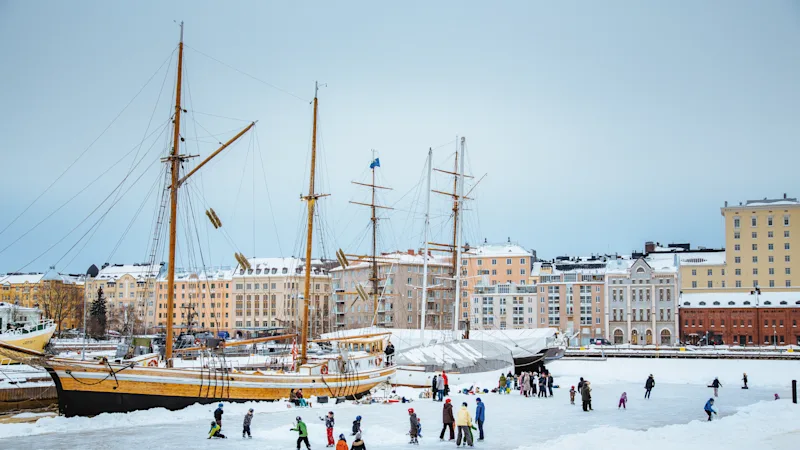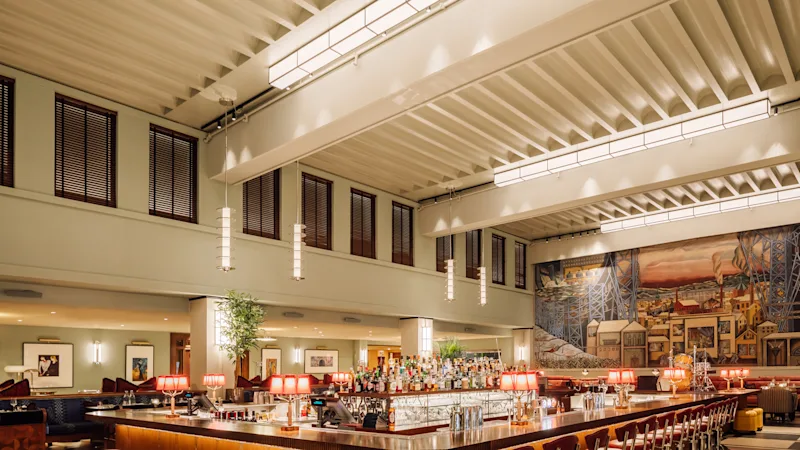1.5 million people have visited MUNCH: Norway's largest art attraction
One and a half million people stepped through the doors of the new MUNCH last year. The museum, which houses the well-known Scream, has become one of Europe's most visited art attractions. And pay attention: The Scream is only displayed for one hour at a time...
MUNCH is one of the largest museums in the world dedicated to a single artist. Edvard Munch's works have aroused interest, joy, and emotions, not only in Norway but across the globe.
The museum, which opened its doors in 2021 and spans an impressive thirteen floors, has received a fantastic reception from the public and tourists.
"Our ambitious goal was to have 500,000 visitors in the first year. We ended up with three times that amount, reaching over 1,500,000 visitors."
"The response has been incredible", says press and communications manager Maren Lindeberg to Strawberry.
Visitors from around the world flock to the museum, which is idyllically situated by the sea. A stone's throw away from Jernbanetorget in the heart of Oslo, MUNCH is an excellent destination to combine with a refreshing dip in the Oslo Fjord.
Or, a stroll along the waterfront to explore the city's new district, Bjørvika, and the area's many restaurants, cafes, and shops.
With over 42,000 museum objects, including 28,000 unique artworks, there's no doubt that MUNCH is one of Norway's most significant attractions.
How to experience "The Screams"
It's no secret that the biggest attraction at MUNCH is the artist's most famous work and one of art history's most renowned motifs: The Scream.
Painted in 1893, the painting is shrouded in myth. There are countless theories about why the protagonist in the motif is caught in a scream. In total, there are four colourful versions of the world-famous artwork. Munch chose to keep two of them, which are on display in the museum. A third piece is located in the National Museum. The fourth painting is in private ownership.
In addition, MUNCH exhibits a Scream lithograph from 1895. The Scream images are located on the fourth floor in the collection exhibition "Infinite" - in a separate room. One piece is always displayed, but never all three at the same time.
The works are presented in a rotating display so that they automatically appear one after another while the others rest. The reason for this is the fragile condition of the works. Too much exposure can simply damage the artworks.
– In recent years, we have conducted several research projects that tell us how much light exposure the various versions of The Scream can withstand each day. None of them can be exhibited all the time, which is why the images in this room are displayed in rotation, we are told.
– This is also one of the reasons why we have stopped sending pictures on tours and exhibitions abroad. The works simply cannot withstand it, adds Maren.
Therefore, the images are changed every hour.
It is the colourful oil version from 1910 that is the most famous. If you don't get to see the version you desire, you can always explore other parts of the exhibition before returning to the fourth floor. Just remember that if you exit through the restaurant at the top of MUNCH, you cannot return to the exhibition.
Black metal is also art
In total, there are 13 floors of experiences in the building designed by Spanish architects Estudio Herreros. Here, you'll find both permanent and rotating exhibitions, most of which focus on Edvard Munch's works and life, but not exclusively. On the ninth floor, for example, other artists are allowed to present their works, either individually or as an interpretation of Munch's universe.
One of the most popular exhibitions was when the Norwegian black metal band Satyricon specially composed music that was connected to selected paintings and graphic works by Edvard Munch. The exhibition Satyricon & Munch lasted four months in 2022 and was a great success. Not only did the exhibition open a new branch of interpreting Munch's many themes in art - darkness, melancholy, and anxiety - but it also opened the door for those who may not be as familiar with the artist's works.
– We didn't want music and art to be separate, but we wanted it to be a single, cohesive experience, explains curator Trine Otte Bak Nielsen about the exhibition.
It is this philosophy, a different approach to the traditional way of presenting art, that has become a success factor for MUNCH in the short time since its opening. An exhibition like Satyricon & Munch evoked emotions in both the experienced art critic and a person who stumbled upon the exhibition on a friend's recommendation.
– It's something we strive for - to provide experiences and make art accessible to everyone. In addition, families are important to us. That's why we have many activities for children, including a dedicated art festival for children, MiniMunch. I think we are the only art museum in the world with such a festival, says Maren.
Where to eat at Munch
There is a café on the first floor. However, it is the Twelfth Bistro on the twelfth floor that receives the warmest recommendations.
Here, you can enjoy classic bistro dishes served with fantastic views of the entire Oslo Fjord.
After dinner, the Crane cocktail bar on the thirteenth floor is worth exploring. The bar features a spacious rooftop terrace and stays open late.
In the summer, concerts are held on the rooftop terrace, or DJs play - a perfect way to end a cultural visit to MUNCH.
Where to stay:
Clarion Hotel® Oslo, Dronning Eufemias Gate 15

